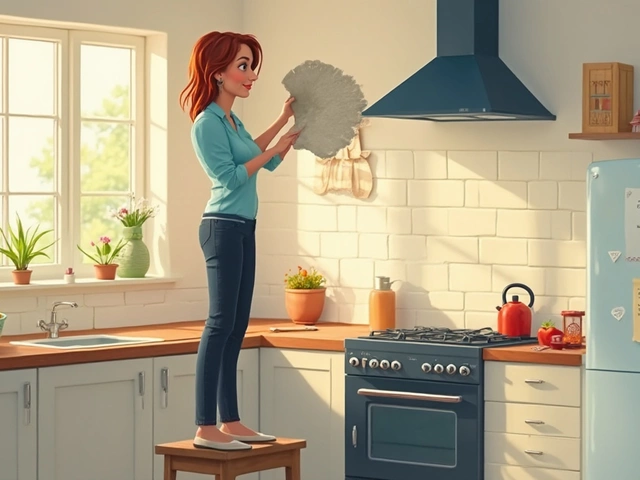Pressure cookers are great for speeding up meals, but when they stop working it can ruin dinner plans. Most issues are simple enough to fix at home, and you don’t need a workshop full of tools. Below you’ll find the most common problems, easy checks, and clear steps to get your cooker back in action.
1. Cooker won’t build pressure. If the lid stays loose or the pressure indicator never rises, the sealing ring is probably worn out or mis‑aligned. Pull the ring off, clean any food residue, and check for cracks. A damaged ring should be replaced – they’re cheap and fit most models.
2. Steam keeps leaking. A whistle that sounds continuously or steam escaping from the handle usually means the valve is blocked. Remove the valve, clean out any food particles, and make sure the spring moves freely. If the spring is stuck, a drop of food‑grade oil can help.
3. The cooker won’t lock. A jammed latch often comes from a buildup of debris around the locking mechanism. Wipe the area with a damp cloth, then spray a little lubricant (silicone spray works best) and try locking again.
4. Over‑cooking or burning food. This is usually caused by using the wrong heat setting. Start on medium heat until pressure builds, then reduce to low. If you’re still getting scorched food, check the gasket for heat damage – a worn gasket can let heat escape unevenly.
Step 1: Safety first. Unplug the cooker, let it cool completely, and release any remaining pressure by following the manufacturer’s instructions. Never try to open the lid while there’s still pressure inside.
Step 2: Inspect the sealing ring. Pull the ring out and look for cracks, hard spots, or food stuck in the folds. Clean it with warm soapy water, then dry it thoroughly. If the ring is older than two years, replace it.
Step 3: Clean the pressure valve. Remove the valve cap, shake out any debris, and rinse it under warm water. Use a small brush to clear the tiny holes. Reassemble and test the valve by turning the dial – you should hear a soft hissing sound.
Step 4: Check the locking mechanism. Spray a tiny amount of silicone lubricant on the latch pins and move the lock back and forth a few times. If it still sticks, inspect the pins for bends and straighten them gently.
Step 5: Test the cooker. Fill the pot with water up to the max line, seal the lid, and bring it to pressure on medium heat. Watch the pressure indicator; it should rise within a few minutes. If it does, the cooker is ready for regular use.
If any of these steps don’t solve the problem, the issue might be deeper – such as a warped base or a faulty safety plug. In that case, it’s best to call a professional appliance repair service. Trying to force a broken part can be dangerous and could void your warranty.
Keeping your pressure cooker in good shape is mainly about regular cleaning and checking the gasket each season. A quick visual check after each use can catch wear before it causes a breakdown. With a little attention, you’ll keep your cooker safe, fast, and ready for those hearty stews and quick rice dishes.

Pressure cookers can usually be repaired, and fixing them at home can save both time and money. This article covers how to spot common problems, which parts can be replaced, and when to leave repair jobs to the pros. You'll also find smart tips to keep your pressure cooker running safely. Even if you're not a 'handy' person, a lot of repairs are easier than you’d think. Don't toss out that pressure cooker until you know what can actually be fixed.

Proper appliance maintenance can save money, extend lifespan, and keep everything running smoothly at home. Learn about essential maintenance tips for common household appliances and understand why some regular attention can go a long way. Dive into practical tips and advice that are easy to apply and can prevent inconvenient breakdowns.

Stuck between fixing or swapping your boiler? Discover the real facts, costs, tips, and how to make the right call for your property, budget, and comfort.

Discover how long extractor fans last, what shortens their life, and tips to maximize their lifespan in your kitchen or bathroom. Practical, clear advice from real experience.

Ovens are essential in any kitchen, but they can sometimes act up. Whether it's uneven cooking, a door that won't close, or strange noises, there's usually a straightforward explanation—and solution. This article delves into typical oven issues, offers handy tips to troubleshoot them, and suggests when it's time to call a professional. Knowing these basics can help keep your oven running smoothly.

Struggling with a kitchen extractor fan that's lost its power? This guide explains how to find and fix common blockages that cause bad smells and poor airflow. Learn step-by-step how to safely clean your fan and make it work like new, plus get handy maintenance tips to stop future clogs. We break down the process so you don't need tools or special skills. Get your kitchen back to normal without calling in an expert.